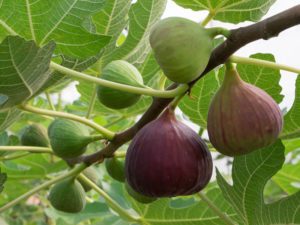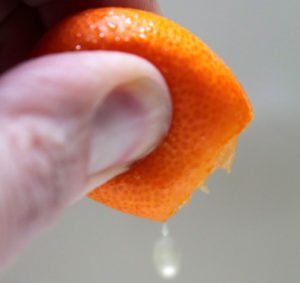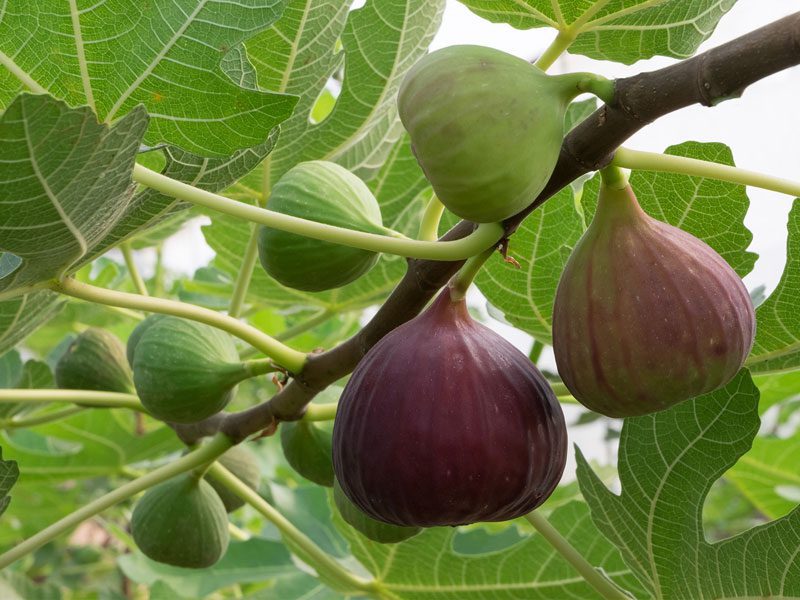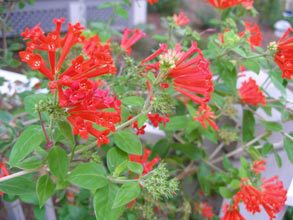We’re lucky to live in a climate that allows us to grow stuff year ‘round. We can harvest two vegetable crops each year. Just think, when northerners are setting out their tomatoes on Memorial Day, we’re harvesting our first crop. We grow fruits which we can harvest in all four seasons.
I’d like to focus on fruit and nut bearing trees, shrubs and perennial vines which will reliably produce a yearly crop here in the Lowcountry. Some fruit trees that can grow down here aren’t really suitable for the home gardener. Peach and apple trees, for example. You rarely see them in the Lowcountry, but some cultivars actually can be grown here. However, the need for thinning and the several annual sprayings required places them outside the resources of most home gardeners.
Pecans are the only edible nut bearing trees to thrive here, but because of the size they can attain, aren’t really suitable for most back yards. Too, they are very water hungry and unless you have a well along with your large property, it can be very expensive. Pecans are alternate bearers, but home gardeners can expect a reasonable crop only every few years. Other nuts, such as hickory, can grow here but the nuts are bitter; useful only for wildlife.
But let’s talk about what will grow here. Fig trees are very popular and for good reason. They often bear twice a year and rarely  have health or pest issues. They are actually quite useful as ornamental trees, too. They have beautiful leaves in summer and architectural structure in winter. Did you know that fig trees are the only fruit trees which don’t flower? Actually, they do, but the flowers are inside the fruit. Fig trees can attain great height and spread but take well to severe pruning.
have health or pest issues. They are actually quite useful as ornamental trees, too. They have beautiful leaves in summer and architectural structure in winter. Did you know that fig trees are the only fruit trees which don’t flower? Actually, they do, but the flowers are inside the fruit. Fig trees can attain great height and spread but take well to severe pruning.
Another lovely fruit bearing tree is the Loquat, and like citrus, it’s evergreen. It’s unusual in that it flowers in winter and bears fruit in spring. The ratio of flesh to pits is quite small, so it takes a lot of fruits to make a jar of jam. Birds love ‘em, though, and since the tree is one of the few non-conifer evergreens, it’s use as an ornamental should be considered. Frankly, the fruit is a lot of effort for so little return!
Pear trees are quite successful, but take a long time to mature enough to produce fruit. They make beautiful espaliers (the ones at Biltmore Estate are marvelous). I’m grateful to my friend and plantsman, Jay Weidner, for letting me have free access to his bountiful tree. Unlike most other fruit, pears should be picked while they’re still hard and unripe.
Although the Paw-Paw is native, you’ll never find its fruit in a store. Its banana custard-like fruit is so perishable that it must be consumed within a day or two after it’s picked. The mature tree is quite large, and it’s not reliably self-fertile. Most of us have never even seen a tree or eaten its fruit. Local gardener, Pete Godbey, often shares his with the Lunch and Learn classes.
We can grow many varieties of citrus. These trees really check all the boxes. They have beautiful shiny evergreen foliage, the flowers are sublimely fragrant, and the colorful fruit can stay on the tree for weeks; even months, without loss of flavor. Their bright fruits are welcome splashes of color in the winter. They are rarely troubled by pests or disease, and all do wonderfully well in containers if space is an issue. Limes need to be container grown and protected in winter, but according to our citrus maven, Ned Rahn, most can stand cold down to 28 degrees. The only caveat I give is that the deer like the fruit as much as we do, and they eat the foliage, too!
 If you’ve avoided eating kumquats because you’ve heard they’re mouth puckeringly sour (you eat them whole), avoid no more. Just bite off the end and squeeze out the juice. It will be as sweet as candy. It’s the juice, not the rind, that makes them sour! I just learned this and sure ‘enuf, it works. Gets rid of the seeds, too.
If you’ve avoided eating kumquats because you’ve heard they’re mouth puckeringly sour (you eat them whole), avoid no more. Just bite off the end and squeeze out the juice. It will be as sweet as candy. It’s the juice, not the rind, that makes them sour! I just learned this and sure ‘enuf, it works. Gets rid of the seeds, too.
Although banana trees themselves will withstand several degrees of frost, they need about 15 months of fairly mild weather to mature the fruit. If you see your banana tree begin to flower by early April, chances are pretty good you’ll be able to harvest the stem before the first hard freeze. The plant produces offsets freely, so even though the flowering stem will die after fruiting, you’ll have plenty of daughters to carry on. Bananas are very heavy feeders, so don’t expect their fruit to feed you if you don’t feed them. Wood ashes are great banana food.
Persimmons, particularly the ‘Fuyu’ cultivar, will reliably produce excellent fruit each year when mature.
Some of the best blueberries and blackberries are grown in the Lowcountry. The thornless ‘Apache’ blackberries get as big as your thumb. Sweet and delicious, they fruit only on new canes, so cut down the ones which have already fruited. The birds usually get all of my blueberries, but the Farmers’ Market is a reliable local source. They’re so successful that one vendor says she makes enough from her backyard blueberry patch to pay her property taxes!! Strawberries, perennial in other areas, are usually grown as annuals down here.
Those totems of the south, Muscadine and Scuppernong grapes, are often used to make homemade wine; but definitely not Grand Cru. These natives have thick, bitter skins which are not eaten. If you’ve never eaten any of these grapes, you’ll need lessons and you’ll need to be outside. You can find videos of eating instructions on-line. Really? You need instructions to eat a grape? Basically, though, you just point the stem-end towards your open mouth and squeeze. The skin is discarded and you either masticate the flesh and spit out the rather large seeds, (hence the need to be outside), or just consume the seeds along with the flesh. Definitely not for the dainty!
You’d never catch Scarlett O’Hara eating a Muscadine.









